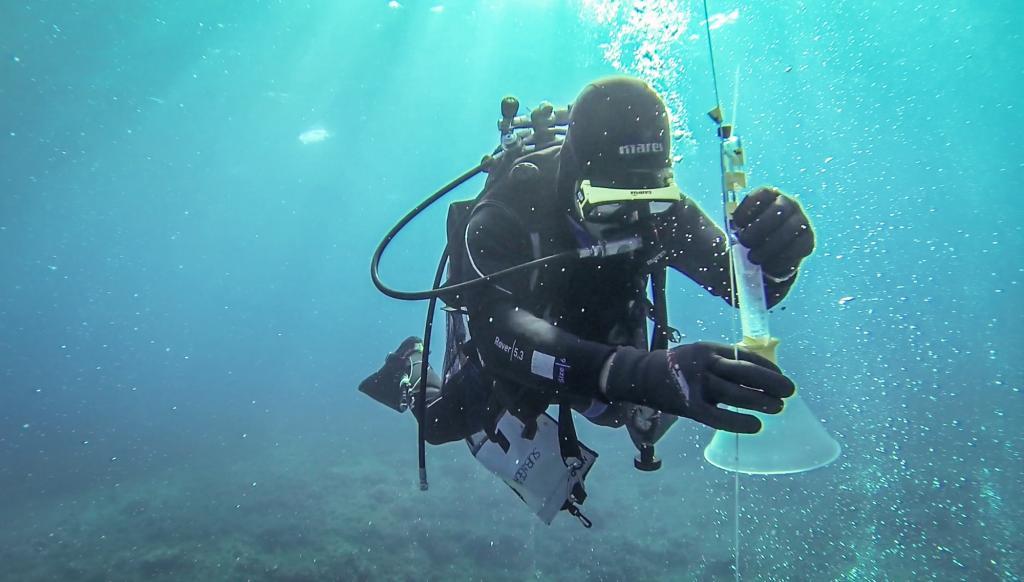New method for monitoring CO2 sources on the seaground
August 30, 2019 Researchers studied natural gas leaks in the Mediterranean off ItalyThe storage of carbon dioxide in the seabed is one of the measures discussed by the IPCC for limiting climate change. So far, however, there are no proven methods to monitor possible CO2 leaks underwater on large seabed areas. Using natural gas wells off Italy, researchers from the GEOMAR Helmholtz Center for Ocean Research Kiel have developed models that could help plan leakage monitoring.
By reducing greenhouse gas emissions alone, the goals of the Paris Agreement on Climate Change are now virtually impossible to achieve. Therefore, the IPCC discusses additional measures to reduce the concentration of greenhouse gases in the atmosphere. For example, carbon dioxide produced by burning fossil fuels could be captured or removed directly from the atmosphere and then stored in geological reservoirs. The Norwegian group Equinor (formerly Statoil) has been operating such a facility for the capture and storage of carbon dioxide since 1996. Every year, it injects about one megaton of CO2 into a water-bearing sandstone layer below the North Sea. However, reliable options are still being discussed to effectively monitor the leakage of greenhouse gas from such submarine reservoirs.
In this context, GEOMAR researchers have studied natural volcanic sources of carbon dioxide off the coast of Italy. With the findings of these studies, they have developed models that can be used to monitor the safety of future submarine CO2 deposits. The corresponding study has now been published in the international journal Environmental Science & Technology.
The storage of carbon dioxide in rock strata beneath the seafloor poses a lower risk to humans compared to land-based storage. Should gas leak from the seafloor, it dissolves in seawater. However, it can lower the pH and damage the local ecosystem. "Currently, there is no established method to locate such carbon dioxide leakage and to determine the total amount of outgoing gas as the exit points extend over a several hundred square meters of seafloor area," explains Dr. Jonas Gros from GEOMAR, first author of the new study. Together with colleagues, he therefore investigated changes in the pH in the vicinity of natural carbon dioxide emissions in front of Panarea, a small island off the coast of northern Sicily.
During diving operations and with ship-based instruments, they collected gas and water samples near the exit points. The team used this data to test a computer model he developed that would predict pH changes in seawater due to carbon dioxide leakage. This simulation showed that more than 79 percent of the carbon dioxide is already dissolved at a distance of four meters from the seabed.
The team also found that the model was able to predict a pattern of pH variation in the waters around the gas wells, which was comparable to the measured sensor data. "This will allow the new model to serve as a guide to strategies for routinely monitoring carbon sinks in the seafloor and assessing the impact of carbon dioxide emissions on the local marine environment," said Gros.
